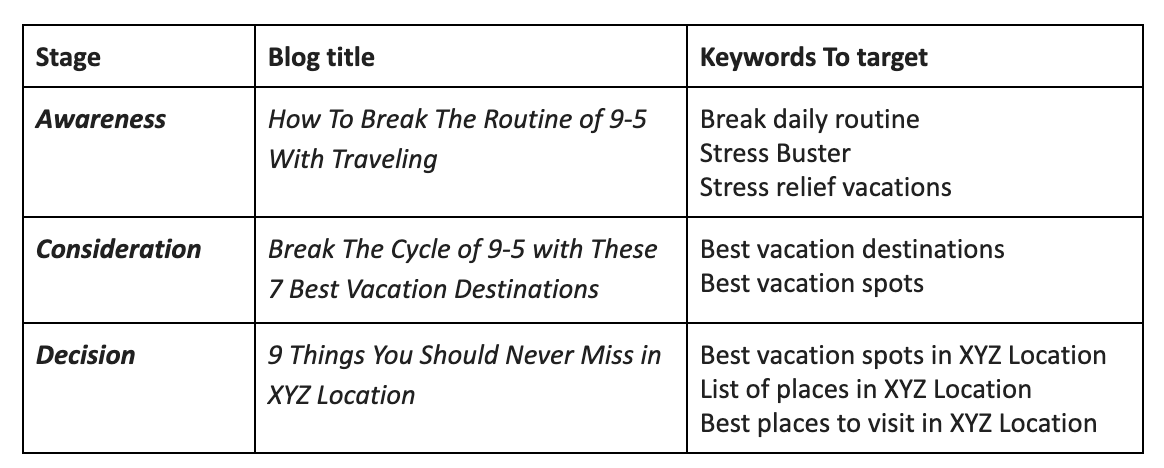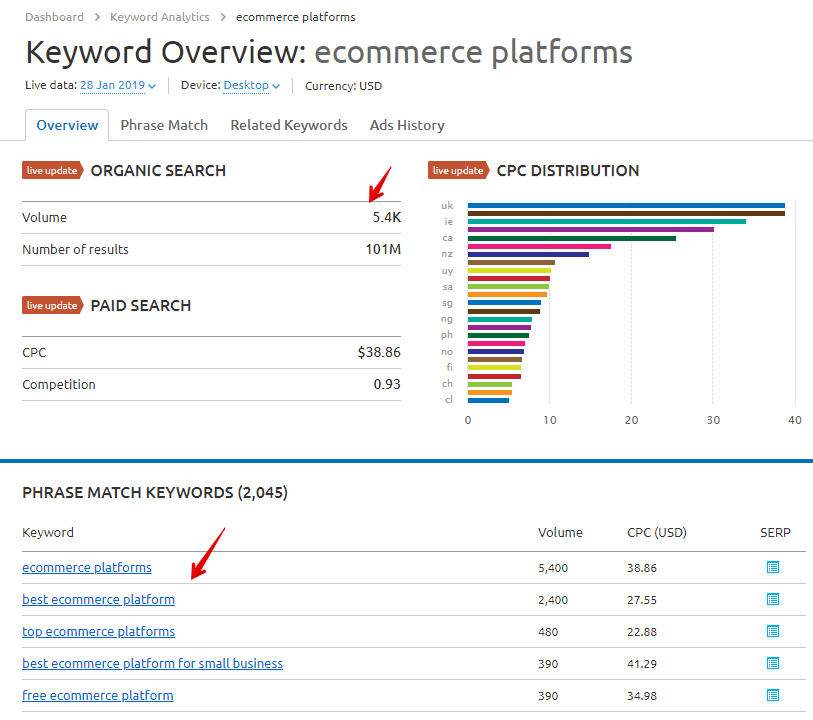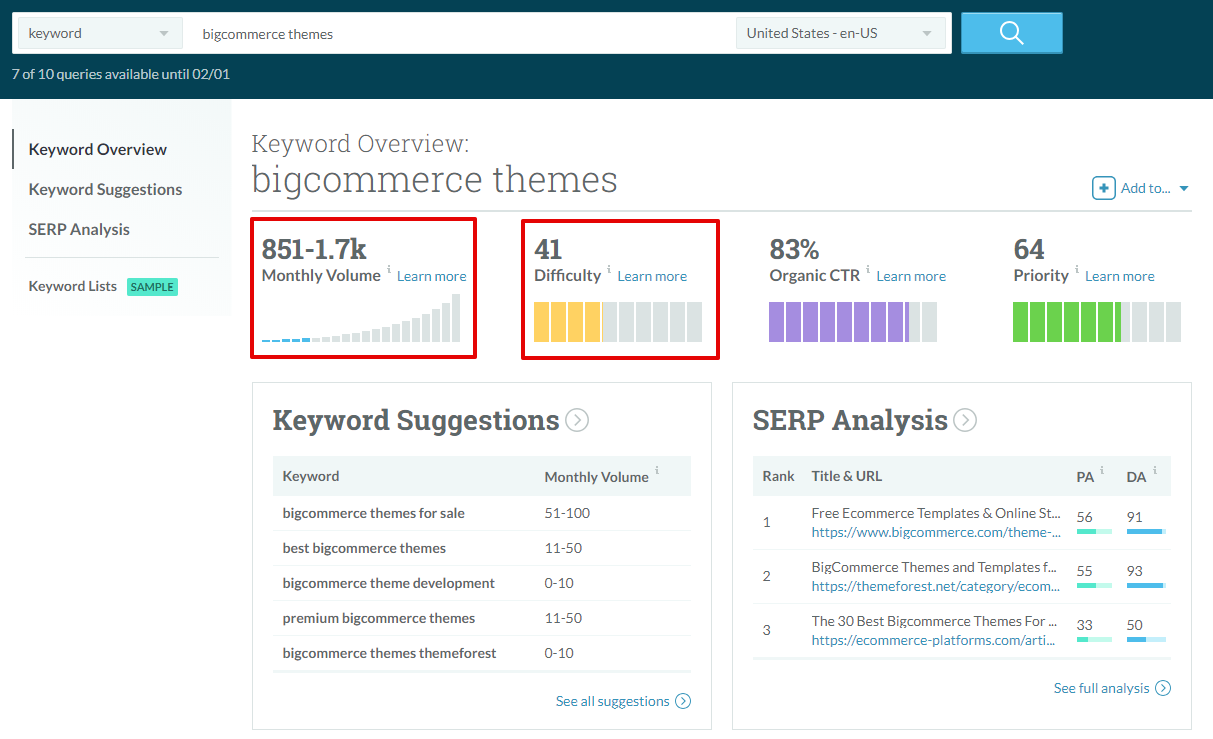Your blog can’t cater and please everyone, it’s not an avocado.
Every blog has a specific audience, and it’s important to keep that in mind. This is not only for the sake of your blog, but for your content to rank better on Google.
For the sake of my upcoming argument, let’s assume for a second that Google is in fact Santa.
As a content creator, I’d ask Santa to rank my blog posts first, for every possible keyword I write for.
That would be the best Christmas ever!
But I’m afraid that Google doesn’t grant such wishes (unless you’re willing to buy each and every keyword out there).
SEO is much more complicated than that.
A couple of years back, everyone was stuffing keywords in meaningless ways to get to the top on search engines. And it worked.
But that ship has sailed a long time ago and these dark techniques don’t work anymore. In fact, Google will punish you if you try to cheat. Many brands have tried, they all failed.
SEO is now more logical, practical, and user-centric (the way it should have been all these years), and ranking your blogs on desired keywords requires a thorough analysis.
From finding the right keywords that can give the target audience to optimizing blogs for rank improvisation, you need a full-proof method.
In this blog post, I’ll cover two essential topics to keep in mind when writing a blog post.
1. How to speak your audience’s language
2. Use Latent Semantic Indexing (LSI) & Long Tail Keywords.
Let’s start with tips on how to find the right keywords.
1. How to speak your audience’s language
This is where a majority of marketers fail.
55% of marketers say blogging is their top priority and, clearly, not everyone gets the success they except at first.
If they fail to pick the right keywords, they’ll spend a lot of time and energy to work on their piece … and won’t get any result.

One of the basic mistakes we all do is that we pick the keyword with attractive volume and think of blog titles that can heavily dilute that keyword.
This approach of finding the blogs based on keywords may work, but there’s a much better option to consider.
Pick the blog subjects first and then identify relevant keywords.
This relies a lot on something all marketers have heard of: The (3-stages) Purchase Funnel:
- Awareness: When a potential customer identifies there’s a problem and it needs to be solved. The customer tries to tag a problem with a name and wants to do further research.
- Consideration: When the customer has identified the problem and wants a solution. The customer will find all the possible ways to solve a problem.
- Decision: The customer will decide to make a purchase and tries to solve the problem.
Now, before thinking about writing a blog, you must identify the stage it will fall into.
Let’s take an example.
Suppose, you’re running a travel company, offering various deals on international tours and vacations.

Understanding the three stages of your funnel will not only help you to pick the right subject, but it will also lead you to choose the right keywords. Here’s what your imaginary travel agency’s blog planning could look like:

With this approach, you can find blog topics that fit into these stages, and you can better identify the right keywords to target as well.
Listen to your audience
There’s a very little room for failure when speaking the same language as your core audience. One way to learn how your audience speaks is through social listening.
Social listening already helps thousands, if not millions of marketers to better understand their audience, their market, and their competition.
- What are the main topics discussed?
- Where are the discussions taking place?
- Who is talking?
- What problems do they face?
- How are people talking? Which words and expressions do they use to formulate their questions/remarks and demands?
At the end of the day, social listening will help you identify keywords to focus on, may they be specific words, or specific expressions (of long tail keywords).
2. Use Latent Semantic Indexing (LSI) & long tail keywords
Adding the right keywords and creating content will help you climb the ranking ladder, but the use of LSI and Long tail keywords will give you the extra boost.
Latent Semantic Indexing keywords are the words that are relevant to your main keyword. LSI keywords help search engines to define the context of the content and give rankings accordingly.
For example, Blackberry Smartphone
The word Smartphone is an LSI to Blackberry.
Because you can also write about Blackberry fruit. In that case, Fruit will be the LSI to Blackberry.
LSI keywords help you in ranking higher because of a logical reason. Google is paying more attention to defining the context to showcase the right results to the audience. Years ago, that was not the case. Results were more keyword driven and there was no sense of reading the content because there were mostly keywords only! When search bots will crawl your content and find more LSI phrases, it will give more strength to the sense of relevancy.
Another way to increase blog visit is by adding long tail keywords in your content.
A long tail keyword is usually a bunch of 3 or more words, which is extremely relevant to your subject. Here’s something from my personal experience:
I wrote an article on how to start a clothing line back in May 2018. We got a good ranking on the main keyword “how to start your own clothing line” as the article is thorough. In September 2018, we observed that we’re getting traffic from other queries as well (using Google Search Console.)
We decided to add those long tail keywords in the content and within two months, we saw an increase of 173% in total page views! Have a look:

The thing is, the main keywords will do most of the work and give you the right audience, but adding LSI and Long tail keywords will give an edge over other content.
Tools to find the right keywords
It’s important that marketers understand that SEO optimization is impossible without the right tools.
I recommend you look into SEMrush and Moz. These tools already help many marketers pick the right keywords, and even suggest topics to address to increase their performance.
SEMrush helps in many ways like Keyword Research, Domain Analysis & Page Analysis, Performance check, Content Subject Suggestions, Competitor analysis, Paid Search analysis, On Page & Off-page SEO analysis.
Moz is another great tool to get many SEO insights. The tool can help you with various tasks such as keyword analysis, rank tracking, domain auditing, on-page optimization tips, and many more.
While you’ll need to pay a fee to best use these tools, their free account functionalities can help you to improve your content marketing strategy.

With a free SEMrush account, you can search for particular keywords and find their volumes.
It will also show the match phase keywords & their volumes related to your main keyword. You can use these keywords in your blog and get ranking on multiple phrases.
You will also find the trend of a particular keyword, performing articles, CPC, keyword ad history, competition, number of results, etc. In short, you can get the basics with SEMrush, even though you haven’t opted for the paid version.
Moz, on the other hand, provides a set of free tools where you can get various data. Moz offers these three free tools for SEO:
- Keyword Explorer
- Link Explorer
- Moz Bar

With the Keyword Explorer tool, you can get the idea about the total volume of keywords and the difficulty level. Moz will also suggest some of the keywords related to your query that you can use in your content.
Although you can not find the exact volume of keywords, you will get the basic idea on which phrases are right for you.
Other free tools, i.e. Link Explorer and Moz Bar will help you more in SEO and competitor analysis. We will learn more about competitor analysis in the next part of this guide. But with these free tools, you can find the most important thing: Relevant Keywords & Volume.
Take the time to identify the right keywords
Your content could be filled with incredible insights, if no one can find it, you’ll be wasting your time even creating it.
Now, if you write the same content and use specific keywords – meaning keywords your core audience uses to search answers on search engines – you’ll take your content strategy to the next level.
What about you? How do you find the right keywords? How do you proceed? Do you agree with my views? How would you complete them?
Share your thoughts in the comment section and I’ll be happy to get back to you!






